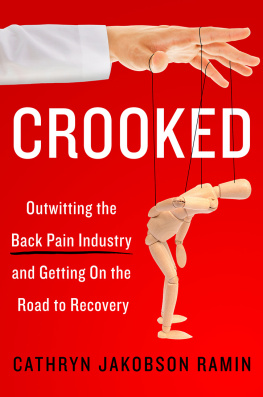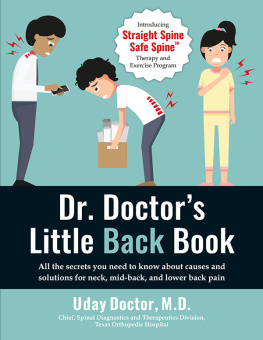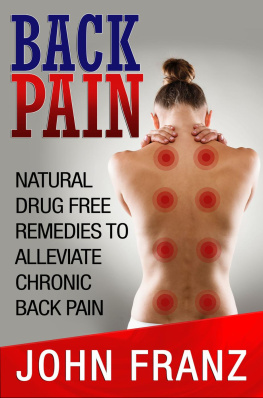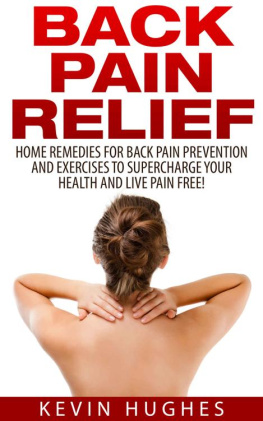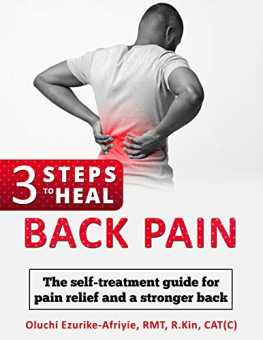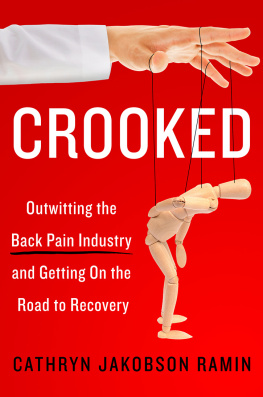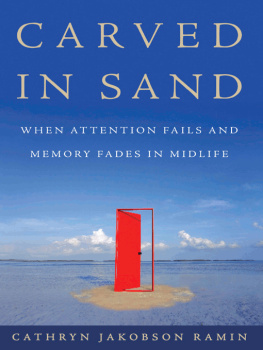Contents
This book is dedicated to my late father, who taught me that my reach should always exceed my grasp; and to my late mother, who did not believe in giving up.
This book is a work of investigative journalism. The scientific and factual material herein is complementary to the narrative and should be used to supplement rather than replace the advice of your physician or another trained health professional. If you know or suspect you have a health problem, I recommend that you consult your physician before embarking on any medical program, treatment, or exercise regimen. Both the publisher and I disclaim liability for any medical outcomes that may occur as a result of applying the methods suggested in this book.
All efforts have been made to ensure the accuracy of the information contained herein as of the date of publication. I researched this book for over five years, with extensive help from medical practitioners, scientists, and experts in many fields, conducting hundreds of hours of interviews. In addition, the book was rigorously and thoroughly checked by three professional fact-checkers. However, any errors, misattributions, inaccuracies, or other defects that remain are of my own making and are my responsibility alone.
Introduction: A Terrible Affliction
When I Went Looking for a Solution, I Found a Much Bigger Problem
The note in my calendar, put there on April 14, 2008, says, Find a spine surgeon. For decades, Id sought to avoid open warfare with my back, but on that date, the truce officially ended.
Over the years, Id spent a fortune on chiropractic care, acupuncture, physical therapy, and massage. Id signed up for Pilates, yoga, Tai Chi, and strength training, but instead of abating, my pain intensified. By 2007, I could not sit or walk comfortably for more than a few minutes. My hip ached and my right leg was on fire. There seemed to be no escaping the pain. Like a rat in a lab experiment, without a prayer of avoiding the offending stimulus, I felt anxious, angry, and trapped. When my dear friend Stacey asked me to join her on a hiking trip in the Peruvian Andes, I told her I could not manage it. My anatomy was holding me hostage; instead of climbing mountains, I would be going under the knife.
I thought fixing my back would be as straightforward as fixing a broken wrist. Id find a surgeon and get it done. But as I made my way through overwhelming amounts of material on the Internet, I saw that I was wrong. As an ordinary patient, I risked drowning in a sinkhole of hype.
However, as an investigative reporter with three decades of experience in digging for the facts, I recognized that Id arrived on the scene at the ideal moment. Back pain treatment was a microcosm of everything that was wrong with the health care system. Back trouble, in all its permutations, costs the United States roughly $100 billion a year, more than is spent annually to treat cancer, coronary artery disease, and AIDS (acquired immunodeficiency syndrome) combined. On a per capita basis, other nationschief among them, the United Kingdom, Australia, Canada, Germany, Sweden, Denmark, the Netherlands, China, and South Koreaalso pay hefty bills.
When I did my first Internet search, I had no idea that Id spend six years studying this topic. Nor did I realize that in the interim, procedures that, for decades, had been upheld as the gold standard in spine care would be relegated to the dusty and crowded shelves of misguided medicine. Spine surgeons go-to procedurelumbar spinal fusionwould be discredited, primary care doctors would find that theyd launched a prescription opioid epidemic, and interventional pain physiciansthose who perform epidural spinal injectionswould be faced with evidence that their shots didnt work. Federal prosecutors would punish device manufacturers for selling spinal instrumentation that was inadequately tested. Painkiller manufacturers and the U.S. Food and Drug Administration would be found tucked into bed with each other, working the drug approval process without regard to patients best interests. As the story evolved, the journalist in me relished each appalling revelation. As a patient, however, I felt as if Id barely avoided stepping off the curb in front of a bus. Many people, I realized, were not so lucky: They got caught in a relentless loop, and were commonly harmed in the process. As one mother, whose most recent episode of back pain commenced when she bent forward to hand her toddler a lollipop, wrote in an e-mail, In an effort to resolve my back problems, Ive had a host of ridiculous medical encounters over the last few years, some confusing, some offensive, some harmfuland I feel completely upside down and unclear about how to best find help.
My goal with Crooked is to set the back pain industrys offerings in their proper context, so that patients have the information they need to make good decisions; to know what works sometimes, what works rarely, and what can cause harm. With luck, I will spare you the side effects of optimism bias: the very human proclivity to seek out information that supports your own views, while ignoring that which does not. Patients have a tendency to overestimate the benefits of treatments, while underestimating the downside, especially when in the presence of a health care provider who would prefer not to admit that he doesnt know. Whether he or she wears a white coat, hospital scrubs, or workout gear; cracks your back; cossets you with heating pads; sticks you with needles; or hands you a set of free weights (and then ignores you in favor of his Twitter feed); remember that every stakeholder wants and needs your business.
Epidemiologist and internist Richard Deyo, a keen thinker about these issues, and the Kaiser-Permanente Endowed Professor of Evidence-Based Medicine at Oregon Health and Science University, summarized the problem: Theres this very mechanical view of the human body, he said, one that suggests that you can find out whats broken and replace it or fix it.
These expectations did not arise in a vacuum, he emphasized, eyebrows lifting slightly above the black frames of his glasses. Those of us in the medical profession are probably guilty of creating them. We seem to be doing more and more, but theres no evidence that people are getting better pain relief. [Industry players] are just making money hand over fist from back pain patients who are desperate for something that will help them. Theyre very easy targets. Anyone who says he has something that might help can set up a practice and hang out a shingle without an iota of proof, and make a pretty good living off of it.
It is fair to say that all professionsin medicine, commerce, finance, or governmentharbor many who are ethical and well intentioned, as well as some who are greedy and unscrupulous. It is not always easy to tell one from the other in advance, or even in retrospect. And it is remarkably easy, as so many patients have discovered, to undergo a series of treatments and procedures that are both unnecessary and terribly destructive.
You can approach this book in the conventional waystarting with part I, where I examine what the scientific evidence says doesnt work and why, before moving to part II, where I tell you what experts say you need to know in order to get on the road to recovery. Or, as I suspect will be the preference of many long-suffering chronic back pain patients, you can reverse that plan and dive right into part II, jump-starting your return to function before heading back to read part I.
Successful rehabilitation is never passive: It requires sweat, persistence, and a lifetime of hard work. Although it wont be easy or quick or painless, by the time you finish this book, youll know how to avoid therapeutic dead ends. No matter what youve heard, back pain is not the unsolvable enigma of modern medicine. So stand by: Youre about to learn what it takes to win this game.

